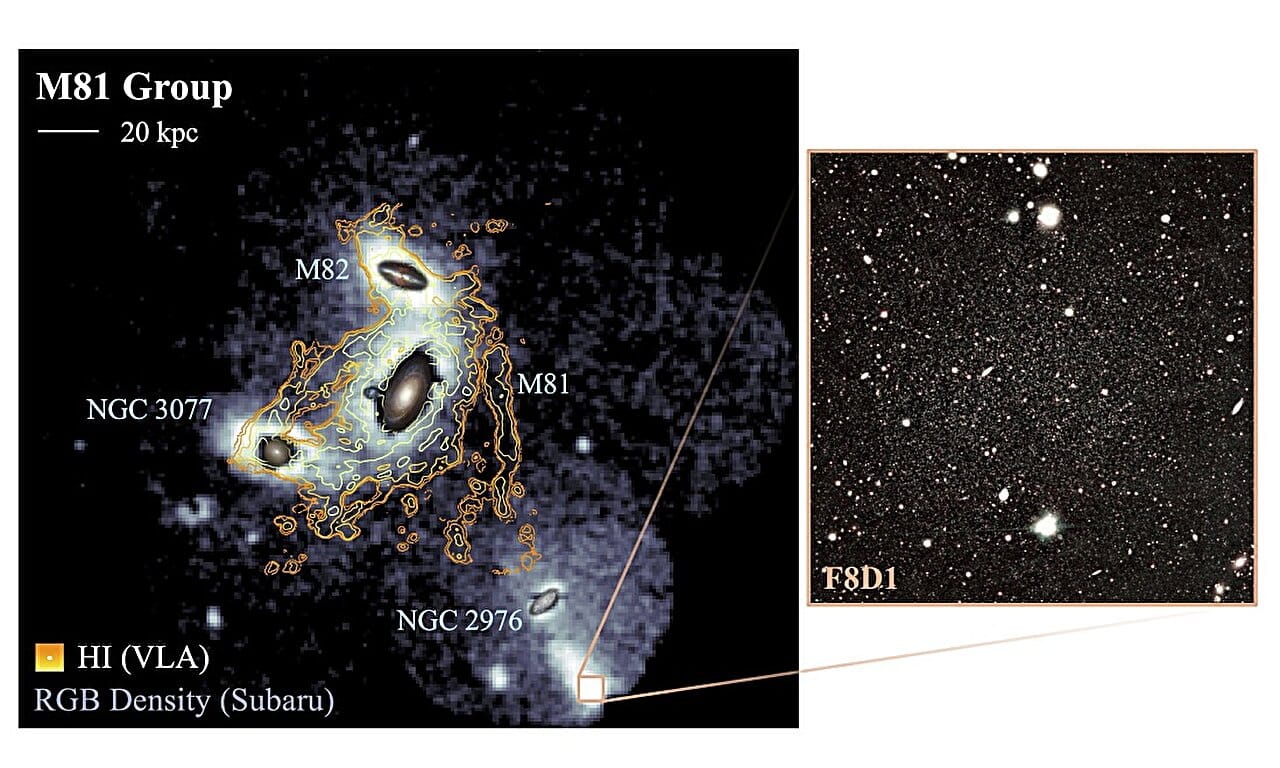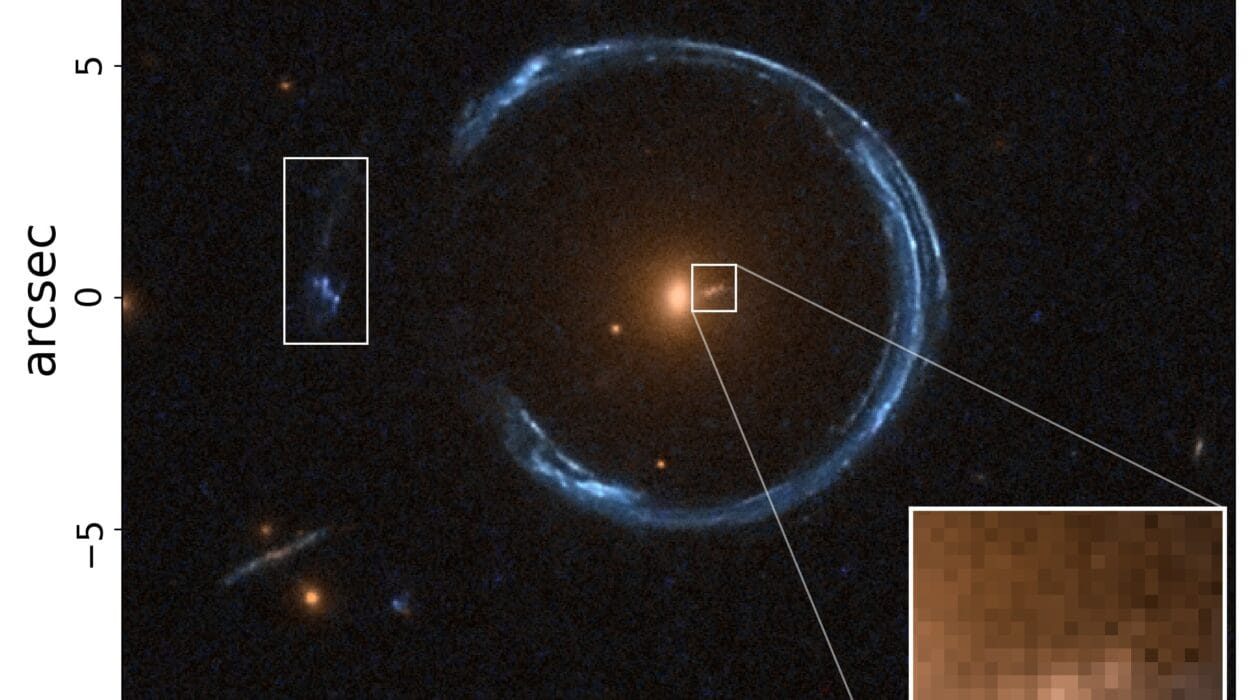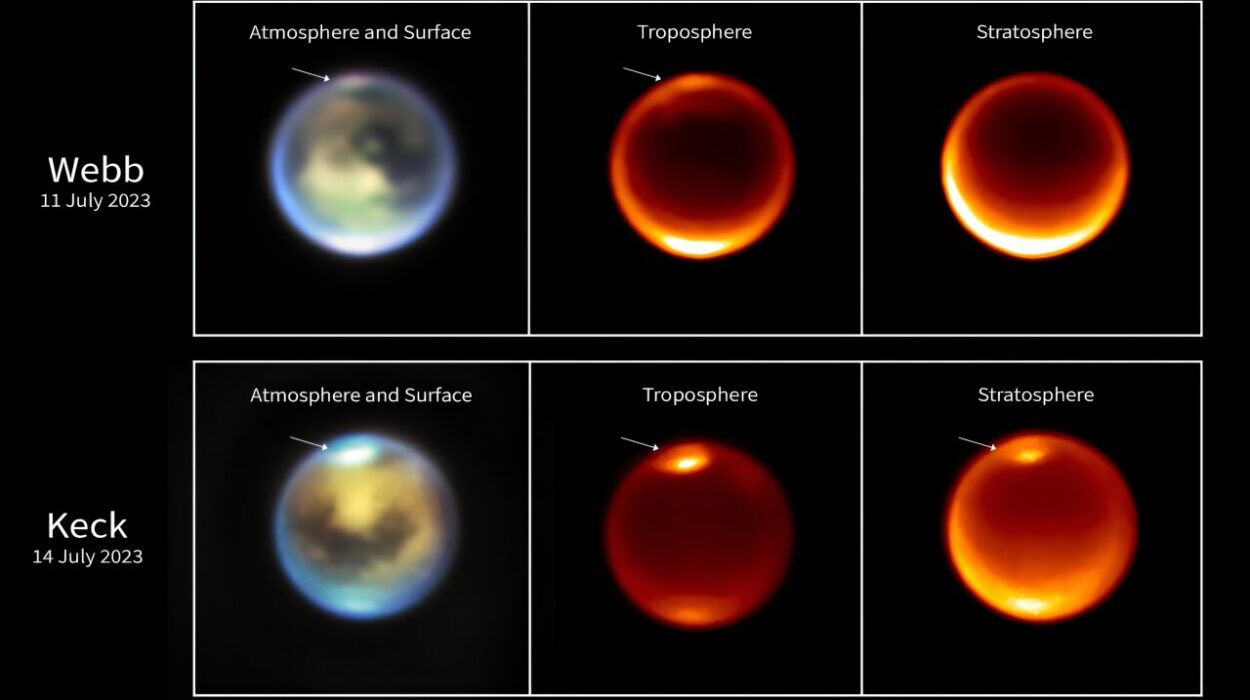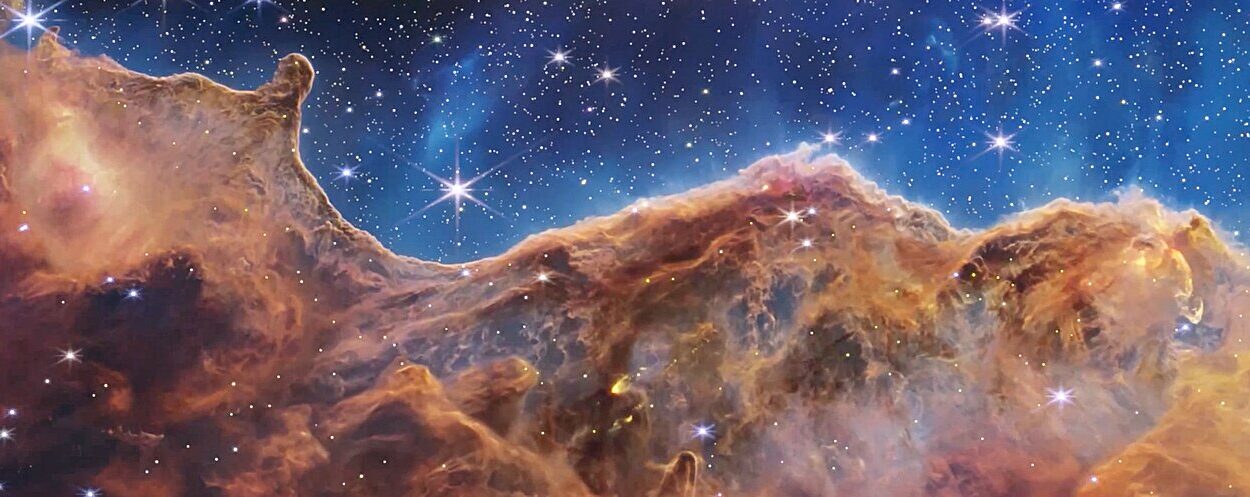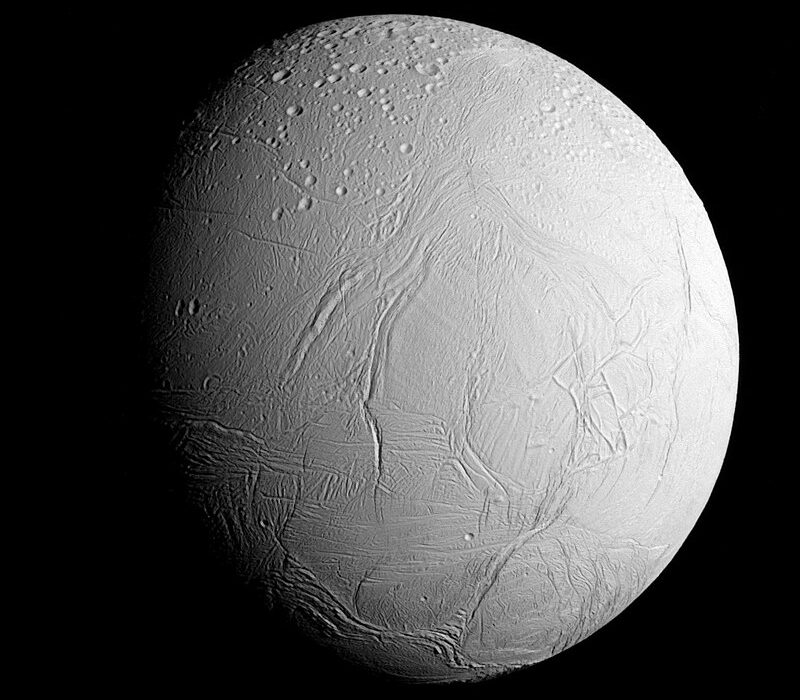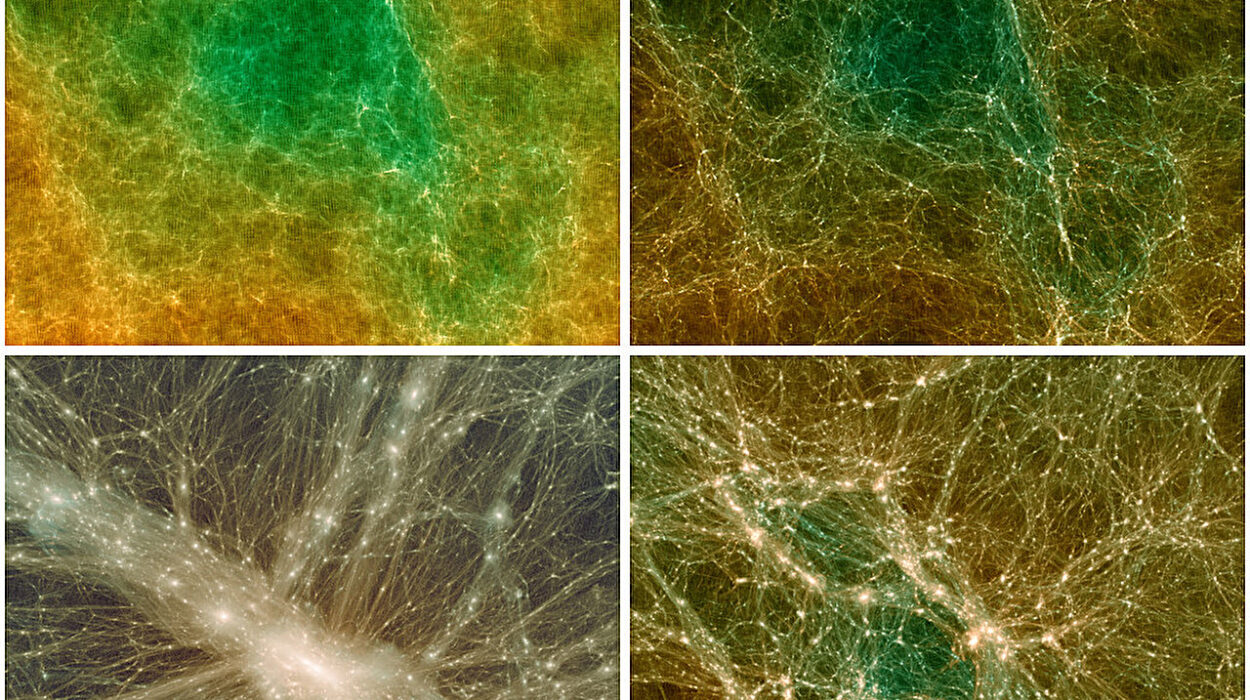Far beyond the soft swirl of our Milky Way, hidden in the dim outskirts of the M81 galaxy group, drifts a ghostly enigma named F8D1. If you were to look for it with the naked eye, you’d never find it. Even powerful ground-based telescopes can barely catch its shimmer. That’s because F8D1 is not your typical galaxy. It’s what astronomers call an ultra-diffuse galaxy (UDG)—a colossal spread of stars so faint and widely scattered that it seems impossible it could hold together.
Imagine a city the size of New York, but with only a few thousand residents scattered across its boroughs. That’s F8D1 compared to galaxies like ours. Despite being nearly as large as the Milky Way, it holds only about one percent of its stars. By all accounts, cosmic forces should have torn it apart eons ago. Yet there it floats, serene and stubborn, challenging everything astronomers thought they knew about galactic formation and survival.
Now, thanks to the sharp eyes of NASA’s Hubble Space Telescope (HST), a team of astronomers has peeled back F8D1’s veil of mystery. The results not only reveal how this ghost galaxy built its stars but also challenge ideas that UDGs are simply failed galaxies that fizzled out after violent births. Instead, F8D1 has a far more complex and surprising life story.
The Cosmic Puzzle of Ultra-Diffuse Galaxies
Ultra-diffuse galaxies are among the strangest residents of the cosmic zoo. First identified in the late 20th century and recognized as a distinct class in 2015, they puzzle astronomers because they defy expectations. With so few stars packed into such large volumes, their gravitational pull should be weak—too weak to resist the tides and pulls of larger neighboring galaxies or clusters. Yet, many UDGs remain intact, spread across the universe like faint cosmic jellyfish.
What holds them together? Are they brimming with unseen dark matter that keeps their stars from flying apart? Are they remnants of once-mighty galaxies stripped of material by violent encounters? Or are they something entirely different—a failed attempt by the universe to ignite a fully fledged galaxy?
These questions have lingered for decades. F8D1, first discovered in 1998, has long stood out as a prime suspect for study. A companion to the M81 group of galaxies, it appeared to be a classic UDG: massive in scale, whisper-thin in brightness, with a puzzling population of globular clusters and scattered stars. Until now, no telescope could resolve its history with enough precision to reveal its true nature.
Hubble’s Piercing Vision
Enter the Hubble Space Telescope, humanity’s premier window into the deep cosmos. Armed with its Wide Field Camera 3 (WFC3) and Advanced Camera for Surveys (ACS), a team led by Adam Smercina of the Space Telescope Science Institute in Baltimore set out to map F8D1’s history in exquisite detail.
Using Hubble’s sharp vision, astronomers could do what no ground-based observatory had achieved: resolve individual stars within F8D1, tracing their ages and compositions. They reached down to the Red Clump—a stage in stellar evolution that serves as a marker of age and distance—allowing them to reconstruct billions of years of star formation.
The result was a stellar time machine. By counting and analyzing these faint stars across different regions—from F8D1’s central body to its far-flung tidal streams—the team charted when and where this ghost galaxy had kindled new suns.
The Hidden Life of a Ghost Galaxy
The findings, now published on the pre-print server arXiv and awaiting peer-reviewed publication, revealed that F8D1’s life story is anything but simple. Far from a one-shot burst of stars that quickly burned out, this galaxy has undergone three distinct waves of star formation:
Billions of years ago, over six billion to be precise, F8D1 blazed to life, forging about 80 percent of all its stars. This early era defined the bulk of the galaxy’s population, anchoring its diffuse yet sprawling structure.
After a long lull, a cosmic aftershock occurred between 2 and 2.5 billion years ago. This period birthed roughly 11 percent of F8D1’s stars in its central region and a remarkable 39 percent in its outer reaches. It’s as if the galaxy’s outskirts suddenly reignited while its core remained relatively calm—a mystery that hints at interactions with its cosmic environment or the infall of fresh intergalactic gas.
Finally, about 500 million years ago, the galaxy experienced a third, smaller spark of star formation. This late flourish built F8D1’s nuclear star cluster—a compact, dense gathering of stars at its heart—and contributed a minor fraction to its stellar population.
But then, less than two billion years ago, star formation shut down entirely. The galaxy, once capable of weaving new suns, fell silent. Today, it floats as a fossil of its former activity, its starry engines dormant, its once-thriving regions stripped and stretched into a stellar tidal stream that extends over 42,000 light-years from its core.
The Weight of a Cosmic Feather
From these observations, astronomers estimate F8D1’s progenitor mass—how massive it was before losing material—to have been about 133 million times the mass of our Sun. Yet nearly 40 percent of that stellar mass is now unbound, torn from the galaxy’s main body into that sweeping tidal stream. Despite this, the galaxy remains surprisingly intact, a testament to gravitational forces that astronomers suspect may be dominated by dark matter.
This finding undermines the idea that F8D1, and perhaps other UDGs, are merely “failed” galaxies—objects that attempted to form normally but lost their gas and momentum early on. The presence of significant, late-stage star formation suggests that F8D1 retained enough fuel to reignite stellar birth long after its initial boom. The classic “burn bright and die young” scenario doesn’t fit.
Moreover, F8D1 harbors a typical population of globular clusters—dense, ancient star groupings that usually orbit healthy, fully formed galaxies. Their presence hints that, despite its faintness, F8D1 shares more DNA with normal galaxies than previously believed.
A Window into Galaxy Evolution
The discovery reshapes how astronomers think about ultra-diffuse galaxies. Rather than evolutionary dead-ends, UDGs like F8D1 may represent a slow-burning, long-lived pathway of galactic life. Their diffuse nature could be an adaptation—a way to survive gravitational harassment and tidal stripping within dense galactic neighborhoods like the M81 group.
Understanding this is crucial not only for unraveling UDGs but also for refining theories of galaxy formation as a whole. Galaxies are the building blocks of the cosmos, and the fact that some can exist with such sparse star populations challenges assumptions about the role of dark matter, intergalactic gas flows, and environmental effects in shaping them.
F8D1 now stands as one of the most detailed case studies of its kind, a prototype for exploring these questions further. Its survival, despite losing nearly half its stars to cosmic tides, hints at a hidden resilience—perhaps a dark matter halo enveloping it like an invisible shield, keeping its ghostly structure from dissolving completely.
Ghosts That Illuminate the Universe
In the end, F8D1 reminds us that even the faintest, most overlooked galaxies have stories to tell. These cosmic phantoms may lack the brilliance of spiraling giants like Andromeda or the Milky Way, but their quiet existence speaks to the universe’s creativity and diversity.
Through Hubble’s lens, what once appeared as a faint smudge has been transformed into a detailed chronicle of stellar birth and loss, of survival against cosmic odds. F8D1 is not a failed galaxy—it’s a different kind of galaxy, one that has taken a long, meandering path through the cosmos, leaving behind tidal trails as delicate as stardust.
And as astronomers continue to peer deeper into the cosmic night, they are certain of one thing: F8D1 will not be the last ghost they meet, nor the last to whisper secrets of how galaxies live, die, and endure in the vast, unyielding dark.
Reference: Adam Smercina et al, The Star Formation History and Evolution of the Ultra-Diffuse M81 Satellite, F8D1, arXiv (2025). DOI: 10.48550/arxiv.2507.13349
